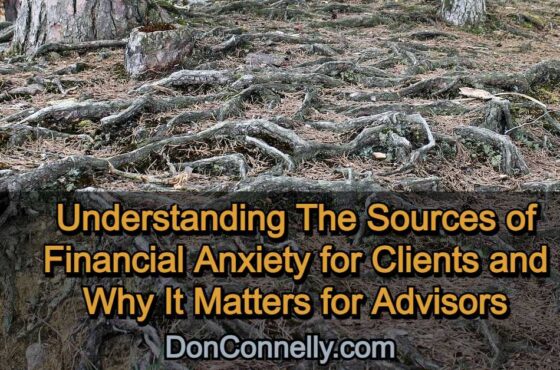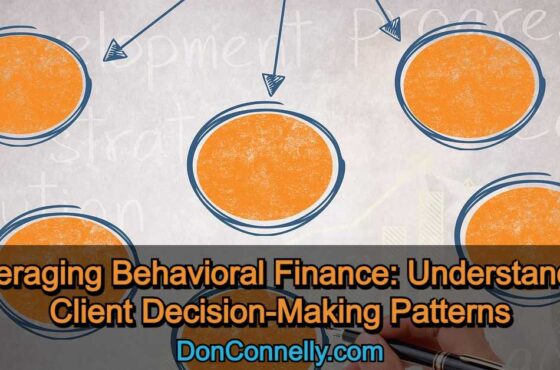Three Challenges Advisors Face in the Post-Pandemic World
 At the height of the COVID crisis, financial advisors were confronted with unthinkable challenges. All things considered, the industry has been resilient in the face of unprecedented headwinds. But, as the other side of this crisis begins to come into view, the industry faces a significant shift that will shape the way advisors operate long after the pandemic wanes. Advisors who get in front of that shift and adapt to the new paradigms quickly will not just survive; they will thrive.
At the height of the COVID crisis, financial advisors were confronted with unthinkable challenges. All things considered, the industry has been resilient in the face of unprecedented headwinds. But, as the other side of this crisis begins to come into view, the industry faces a significant shift that will shape the way advisors operate long after the pandemic wanes. Advisors who get in front of that shift and adapt to the new paradigms quickly will not just survive; they will thrive.
If you could capture clients’ general mood today in one word, “anxiety” would probably say it best. In their hearts, minds, and souls, it’s a very different world from just a year ago and, as much as we all hope for a return to normal, there may be no going back for clients. Their perceptions and priorities have forever changed, much like they did during the 2008 financial meltdown. Only this time, it’s different because it involves both financial and health risks.
What your post-pandemic clients and prospects want
Clients are thinking differently today about what they need from an advisory relationship, and advisors must quickly adapt their own thinking and actions or risk a slow death. The good news is investors need and want financial advice more than ever right now. The bad news is that, with all the competition for their attention, they are in a position to play hard to get, and they know it. What you do or don’t do right now as a financial advisor to meet your clients and prospects where they are at—mentally and emotionally—will impact your business for years to come. Here are three things post-pandemic prospects and clients want.
#1. Clients want to know you’re there for them.
If you’re a frequent visitor to this blog, you know how important trust is to the foundation of a solid client-advisor relationship. It takes time to build that bond, but it can be broken in an instant. Now is the time to understand that there are two kinds of trust. Cognitive trust is based on the confidence one feels in another person’s competence and reliability, and affective trust is based on a feeling of emotional closeness through empathy and friendship. This is a moment when that emotional trust plays a much larger role in the client-advisor relationship.
Clients have been through a lot over the last year. They want to know their financial advisor understands their financial circumstances and their personal circumstances, and how their lives have been impacted. It’s no longer enough to take an interest in their personal lives; advisors must be able to demonstrate genuine empathy—listening to them, validating their experience, and making them feel understood. The best way to demonstrate empathy is to share stories that tell your clients you know what they’re going through.
#2. Clients need to know you are doing everything to keep them informed
In the pre-pandemic world, it was often enough for advisors to schedule one maybe two face-to-face meetings each year on top of a periodic phone call or email to touch base. In the post-pandemic world, clients don’t want to feel as though they are out of the loop. In general, financial advisors and clients have adapted well to the use of virtual meetings via FaceTime, Skype, or Zoom to stay in touch. Post-pandemic, these newfound habits are likely to stick as most consumers have grown comfortable with virtual interaction over in-person meetings.
Now is the time to fully embrace virtual and digital technology as a permanent means of conducting business. Advisors will need to meet the demands of their clients for personalized information via multiple touchpoints according to varying preferences. The key to maintaining a trusted advisory relationship is creating the right cadence of phone calls, emails, and virtual meetings to make your clients feel they are getting the information they need. It would also be important to find a virtual solution for client retention activities such as appreciation events.
Done right, you’ll find, as many advisors have, that fully embracing virtual and digital technologies will free up more time for client servicing to create a better client experience.
#3. Prospects need to be able to find you
One shift that could be a positive for financial advisors is that more people are looking for financial advice. However, it could turn out to be a negative for advisors who can’t be found. Just as record numbers of consumers now utilize digital channels to access entertainment, banking, and grocery services, more people will likely use them to search for and research financial advisors. However, if you are invisible to your market—no website and no social media presence, it will be as if you don’t exist.
Prospects today, particularly the emerging affluent next generations, are more comfortable conducting their search for an advisor online. They may learn about you from a referral or some other source, but if they can’t find you online, or your website repels them, or you don’t have a social media presence, they are likely to move on. According to the Fidelity Millionaires Outlook Study, younger investors look for advisors who incorporate technology into their practices. The first evidence of that is a quality website and the effective use of social media.
Now more than ever, advisors must make the full embrace of technology their top priority if they are going to compete for the attention of next-generation prospects who will soon command more than half the wealth on the planet.
Remember though – even when you fully embrace technology, ours is still a people business. You must master the basics and develop superb soft skills if you are to succeed. Watch this video to learn how our training program ‘Become Brilliant at the basics’ can help.
See program details and enroll today!
This training program is now available as a self-paced course (always open) or as a 12-week coaching program (open only a few times a year, next one starts March 31!)



